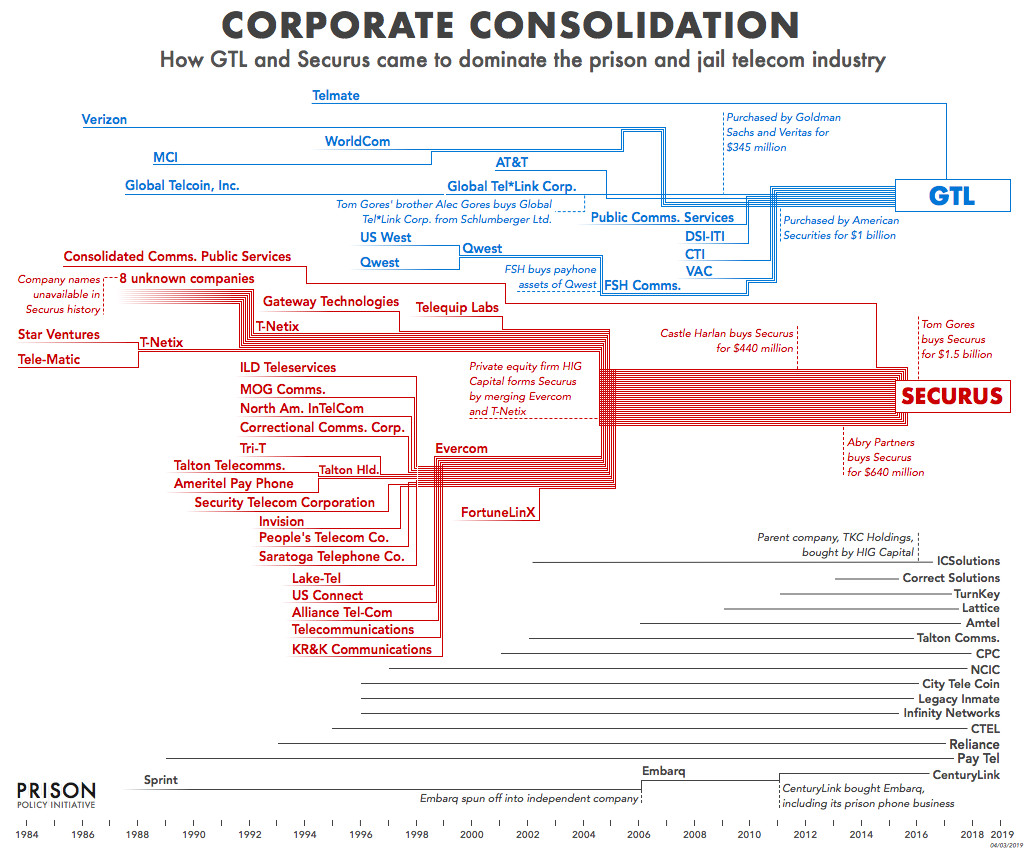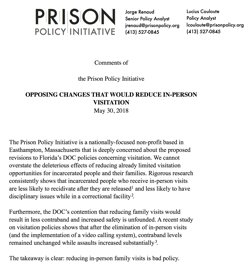When jails replace in-person visits with video, what happens when the technology fails?
As more jails ban face-to-face visits in favor of paid video chats, a growing number of people in jail are being cut off from their families when the technology breaks down.
by Sarah Watson, June 18, 2019
Jails are increasingly replacing in person visits with video calls. This high-tech fad goes against the recommendations of the American Correctional Association, the American Bar Association, and even the Department of Justice’s National Institute of Corrections. These jails ignore the many problems we’ve documented, such as high costs for families, poor quality of the systems and the loss of human contact. But there’s another liability that jails now have to consider: What happens when their shiny new technology fails?
Their vendors — who provide the systems for free in exchange for charging high rates to the families — will say that their technology is perfect. As every person who owns a computer knows, however, technology is not flawless, and these systems do fail — sometimes keeping people in jail from contacting their families for weeks at a time:
| County | State | Time Down | Year | Details | Source |
|---|---|---|---|---|---|
| Shelby County Jail (Memphis) | Tennessee | 2 weeks | 2019 | The vendor (GTL) cut a fiber optic cable | Source |
| Virginia Beach Correctional Center | Virginia | 3 months | 2018 | Jail typically averages 4,000 visits a month | Source1 Source2 |
| Williams County Correctional Center | North Dakota | 2 months | 2017 | System updates originally brought the system down, then it was discovered the upgrade was incompatible with the old equipment | Source |
| Milwaukee County Jail | Wisconsin | At least one month | 2013-2014 | Visual went down leaving only audio | Source |
| Boone County Jail | Arkansas | “months” | 2018 | Either a lightning strike or a software glitch brought the system down, administrators were not sure which was the cause. | Source |
| Volusia County Branch Jail | Florida | One month | 2017 | Lightning struck an integral part of the visitation system. It took multiple technicians to conclude the entire system needed to be replaced. | Source |
| Pontotoc County Justice Center | Oklahoma | Three weeks | 2017 | Visitation went down due to a “computer issue.” | Source |
| Madison County Detention Center (Huntsville) | Alabama | >2 weeks | 2017 | Planned system updates meant visits were suspended. | Source |
| Montgomery County Detention Facility | Alabama | About a week | 2018 | “Technical Issues” disrupted visitation as the jail waited for a replacement machine. | Source |
| Olmsted County Adult Detention Center (Rochester) | Minnesota | 1 day | 2018 | The visitation system crashed, leaving visitors unable to schedule a visit or see their loved ones. The sheriff also confirmed the system sometimes goes down due to weather conditions as well. | Source |
| Ada County Jail | Idaho | 2019 | Ada County Jail experiences consistent technical issues. One visitor to Ada County Jail recalled, “It didn’t work half the time. You’d have to call to see if [the system] was down.” | Source | |
| Mecklenburg County Jail (Charlotte) | North Carolina | 2017 | Frequent problems and system outages caused prisoners to miss their visits. “The video chat would go in and out. Sometimes half the screen would be cut off, and sometimes they wouldn’t work at all,” a former prisoner remembered. “You wouldn’t even get your visitation; you would have to wait until the next week, because even though the system was down, they would not make up the visitation you missed.” | Source |
The good news is that counties are starting to take notice of the downsides to video calling. Most recently, the sheriff of Mecklenburg County, North Carolina (see table above) fulfilled a 2018 campaign promise to reinstate in-person visits, on the grounds that video should be used in addition to in person visits, not as a substitute.
“Allowing our residents to stay connected to family and loved ones through in-person visits improves public safety,” Sheriff McFadden explained. “This simple step alone has been shown to significantly lower the chances that a person will commit another crime after they get out. It also reduces the chance a person will commit an infraction inside the jail which could adversely impact their release. In addition, it improves mental health outcomes and strengthens family units and community ties.”
Mecklenburg County had the right idea. When this technology works, it should be considered a supplement to in-person visits, not a substitute; and when the technology fails, it’s useless. Instead of investing in flawed technology, jails should be looking for more ways to increase traditional methods of family contact.






